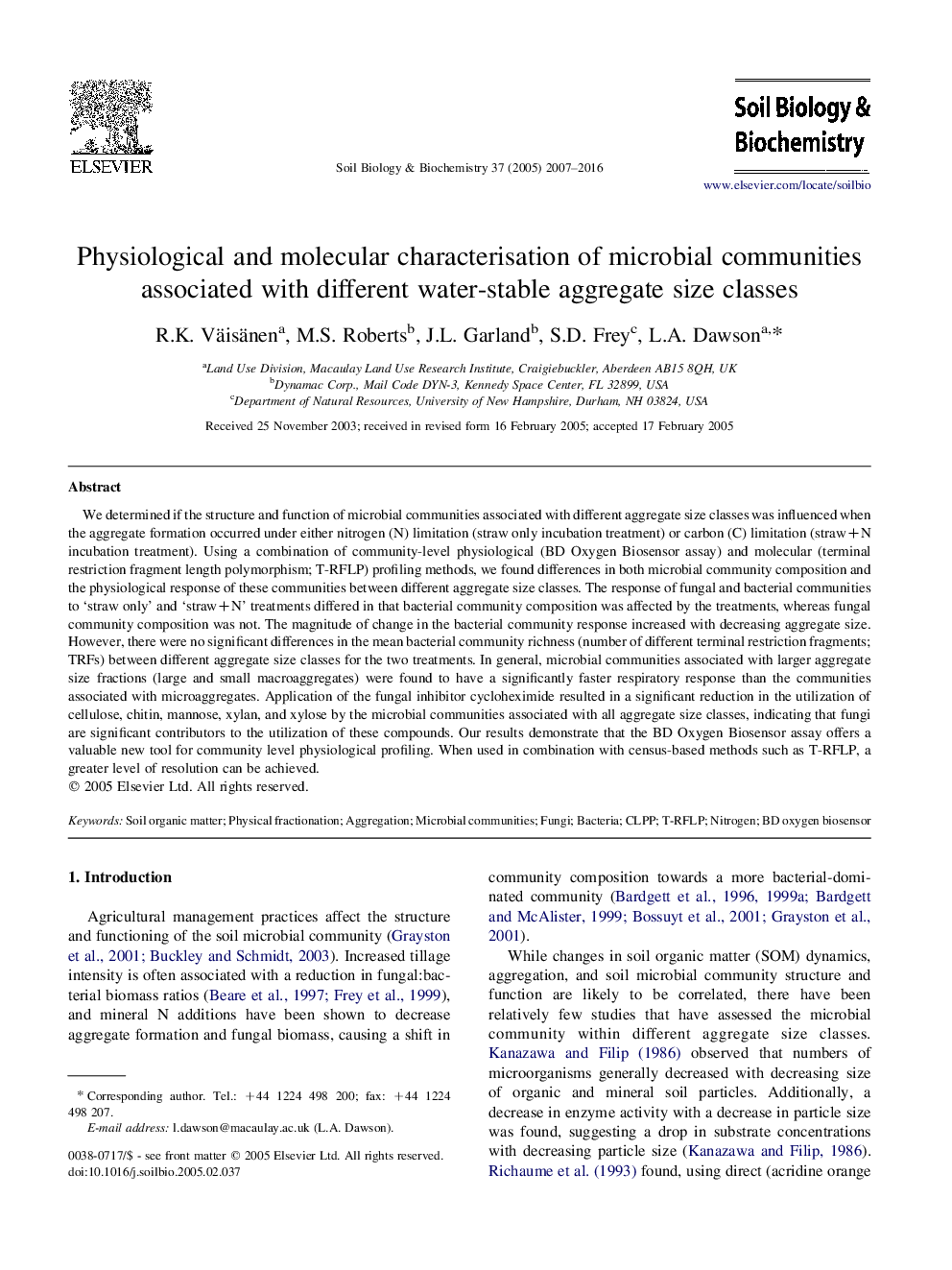| کد مقاله | کد نشریه | سال انتشار | مقاله انگلیسی | نسخه تمام متن |
|---|---|---|---|---|
| 2027245 | 1070101 | 2016 | 10 صفحه PDF | دانلود رایگان |
We determined if the structure and function of microbial communities associated with different aggregate size classes was influenced when the aggregate formation occurred under either nitrogen (N) limitation (straw only incubation treatment) or carbon (C) limitation (straw+N incubation treatment). Using a combination of community-level physiological (BD Oxygen Biosensor assay) and molecular (terminal restriction fragment length polymorphism; T-RFLP) profiling methods, we found differences in both microbial community composition and the physiological response of these communities between different aggregate size classes. The response of fungal and bacterial communities to ‘straw only’ and ‘straw+N’ treatments differed in that bacterial community composition was affected by the treatments, whereas fungal community composition was not. The magnitude of change in the bacterial community response increased with decreasing aggregate size. However, there were no significant differences in the mean bacterial community richness (number of different terminal restriction fragments; TRFs) between different aggregate size classes for the two treatments. In general, microbial communities associated with larger aggregate size fractions (large and small macroaggregates) were found to have a significantly faster respiratory response than the communities associated with microaggregates. Application of the fungal inhibitor cycloheximide resulted in a significant reduction in the utilization of cellulose, chitin, mannose, xylan, and xylose by the microbial communities associated with all aggregate size classes, indicating that fungi are significant contributors to the utilization of these compounds. Our results demonstrate that the BD Oxygen Biosensor assay offers a valuable new tool for community level physiological profiling. When used in combination with census-based methods such as T-RFLP, a greater level of resolution can be achieved.
Journal: Soil Biology and Biochemistry - Volume 37, Issue 11, November 2005, Pages 2007–2016
